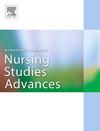The Dutch-translated cultural competence assessment scale for nurses: Cross-cultural adaptation and validation
IF 3.1
Q1 NURSING
International Journal of Nursing Studies Advances
Pub Date : 2025-01-29
DOI:10.1016/j.ijnsa.2025.100303
引用次数: 0
Abstract
Background
Researchers have revealed significant disparities in safety events and patient outcomes between minority and non-minority populations, highlighting the need for a deeper understanding of cultural competence. As frontline caregivers, nurses play a key role in providing culturally-sensitive care. Measuring cultural competence can be challenging. The Cultural Competence Assessment, developed and validated in the United States of America, can help to address these challenges.
Method
The aim was to determine the translation and cross-cultural adaptation, while evaluating the psychometric properties, of the Dutch version of the Cultural Competence Assessment among Dutch nurses. We used a cross-sectional design and conducted the study in two phases. Nurses from all over the Netherlands were recruited through the newsletter of the Dutch nurses association and internal distribution by healthcare organisations. The first phase focused on cross-cultural adaptation and translation. The second phase focused on psychometric testing. Data were analysed using Confirmatory Factor Analysis (CFA). Internal consistency was evaluated, utilising McDonald's omega
Results
The sample consisted of 447 Dutch nurses working in different healthcare settings. The original Cultural Competence Assessment consisting of 29 items was reduced to 27 items in the first phase of the study. After CFA, the best fit was obtained with a two-factor model consisting of 15 items, with a proficient level of internal consistency.
Conclusion
With the two-factor, 15-item Dutch Cultural Competence Assessment, we have provided Dutch nurses with an instrument to self-assess their cultural competence, paying special attention to their awareness, sensitivity, and behaviour when caring for people with cultural differences
求助全文
约1分钟内获得全文
求助全文
来源期刊

International Journal of Nursing Studies Advances
Nursing-General Nursing
CiteScore
5.80
自引率
0.00%
发文量
45
审稿时长
81 days
 求助内容:
求助内容: 应助结果提醒方式:
应助结果提醒方式:


